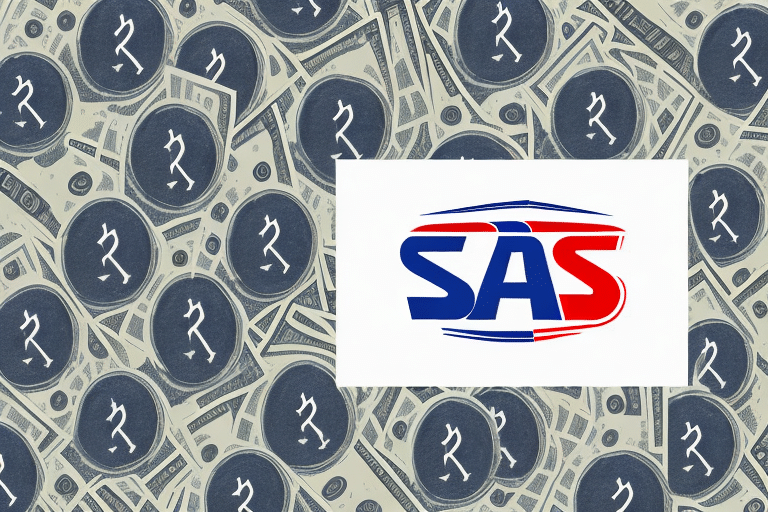How Much Does USPS Insured Package Cost?
If you are a business owner or an individual who frequently ships items, understanding the cost of USPS insured packages is essential. This guide provides a comprehensive overview of USPS insured package rates as of October 2023, along with detailed information about the service to help you make informed shipping decisions.
Understanding USPS Insured Packages and Their Importance
USPS insured packages are a valuable service offered by the United States Postal Service (USPS) that provides protection for items being shipped. Essentially, an insured package is a package that is covered up to a certain value in the event that it is lost, damaged, or stolen during transit.
For business owners, using USPS insured packages offers peace of mind and reassurance to customers, ensuring that their items are protected during shipping. This can enhance customer trust and satisfaction, leading to repeat business and positive reviews.
However, it's important to be aware of certain limitations and exclusions associated with USPS insurance. For instance, prohibited items, improperly packaged items, or items exceeding coverage limits may not be eligible for insurance claims. Always review the USPS Insurance guidelines before opting for this service.
Another key benefit of using USPS insured packages is the availability of tracking information. Both senders and recipients can monitor the shipment's progress, providing transparency and accountability throughout the delivery process.
What is USPS Insurance and How Does it Work?
USPS insurance is a service that allows you to protect the contents of your package against loss, damage, or theft during shipping. The cost of USPS insurance varies depending on the value of the items being shipped and the level of coverage you choose.
Declaring Package Value
When shipping an insured package, you must declare the value of the items. This declared value determines the amount of coverage provided and the corresponding insurance fee. It is crucial to accurately declare the value to ensure adequate protection and streamline the claims process if needed.
Coverage Limits and Exclusions
USPS insurance covers the cost of the items being shipped but does not include the cost of shipping itself. Certain items, such as perishable goods, hazardous materials, and live animals, may be excluded from coverage. For a complete list of exclusions, refer to the USPS Insurance policies.
Filing a Claim
In the event of loss or damage, filing a claim with USPS is straightforward. Ensure you have the necessary documentation, including proof of value and shipment, to expedite the claim process. More details can be found on the USPS Claims page.
USPS Insured Package Rates: A Comprehensive Guide
The cost of USPS insured packages depends on the value of the items being shipped and the level of coverage selected. Below are the current rates for USPS insured packages as of October 2023:
- Up to $50 in value – $2.50
- Up to $100 in value – $3.05
- Up to $200 in value – $5.10
- Up to $300 in value – $6.25
- Up to $400 in value – $7.40
- Up to $500 in value – $8.55
For coverage exceeding $500 and up to $5,000, additional charges apply. Packages valued over $5,000 require a special arrangement with USPS, and you should contact them directly for a quote.
It’s important to note that certain USPS mailing services include free insurance. For example, Priority Mail Express offers up to $100 of insurance coverage, and Priority Mail includes up to $50 of insurance coverage. If your shipment requires higher coverage, you will need to purchase additional insurance.
The Benefits of Using USPS Insured Packages for Your Business
Incorporating USPS insured packages into your business shipping strategy offers numerous advantages:
- Customer Trust: Assured protection of shipped items builds customer confidence in your business.
- Financial Protection: Reduces the risk of financial loss due to damaged or lost items.
- Reputation Management: Minimizes negative feedback by ensuring reliable delivery and handling of products.
- Streamlined Operations: Tracking and insurance integration simplify shipment management.
- Competitive Pricing: USPS offers competitive rates compared to other carriers, making it a cost-effective choice.
Furthermore, businesses can benefit from discounted rates through bulk shipping and business accounts. According to a USPS report, businesses can save up to 25% on shipping costs by utilizing commercial pricing structures.
How to Calculate the Cost of USPS Insured Packages
Calculating the cost of USPS insured packages involves determining the value of the items being shipped and applying the corresponding insurance rate. Here’s a step-by-step guide:
- Determine Item Value: Assess the total value of the items in the package.
- Select Coverage Level: Choose the appropriate coverage level based on item value.
- Apply Insurance Rate: Refer to the current USPS insured package rates to calculate the cost.
For example, shipping an item valued at $150 would require coverage that falls under the $200 category, costing $5.10.
Keep in mind that package weight, size, and destination can also influence the overall shipping cost. Utilize the USPS online insurance calculator for a precise estimate.
Moreover, leveraging flat rate options and bulk shipping discounts can further optimize your shipping expenses while ensuring adequate insurance coverage.
Comparing USPS Insured Package Costs with Other Shipping Options
When choosing a shipping method, it's crucial to compare USPS insured package costs with those of other carriers such as FedEx and UPS. Generally, USPS tends to offer more affordable rates, especially for domestic shipments.
Cost Comparison
According to the latest data from industry reports:
- USPS: Lower base rates with insurance options starting at $2.50.
- FedEx: Insurance starts at approximately $4.00 for similar coverage.
- UPS: Insurance starts around $3.50 for comparable coverage.
These rates can vary based on package dimensions, weight, and shipping speed. Therefore, it's recommended to use each carrier's rate calculator to determine the best option for your specific needs.
Delivery Time and Reliability
While USPS often provides cost-effective solutions, other carriers may offer faster delivery times. For example, FedEx and UPS typically provide expedited shipping options with guaranteed delivery dates, which can be crucial for time-sensitive shipments.
Ultimately, the choice between USPS and other carriers should consider both cost and delivery time requirements for your shipments.
Tips for Saving Money on USPS Insured Package Shipping Costs
Implementing the following strategies can help you reduce USPS insured package shipping costs:
- Compare Rates: Utilize the USPS Rate Calculator to find the most affordable shipping option for your package.
- Use Flat Rate Boxes: Flat rate shipping can be more economical for heavy items, as the cost is fixed regardless of weight.
- Accurate Coverage Selection: Choose only the necessary level of insurance coverage to avoid overpaying.
- Ship in Bulk: Consolidate multiple shipments into a single package when possible to benefit from bulk shipping discounts.
- Leverage Business Accounts: Register for a USPS business account to access discounted rates and special shipping tools.
Additionally, consider using online shipping services that partner with USPS to offer discounted rates. Tools like USPS Click-N-Ship allow you to print labels and manage shipments efficiently, often at reduced costs.
Common Mistakes to Avoid When Shipping with USPS Insured Packages
Avoid these common pitfalls to ensure smooth and cost-effective shipping with USPS insured packages:
- Incorrect Value Declaration: Accurately declare the value of your items to ensure proper coverage and prevent claim denial.
- Inadequate Packaging: Properly package items to minimize damage risks and comply with USPS packaging standards.
- Ignoring Prohibited Items: Familiarize yourself with USPS prohibited items to avoid shipping items that cannot be insured.
- Incomplete Labeling: Clearly label packages with both sender and recipient addresses to prevent delivery issues.
Ensuring comprehensive labeling and adhering to USPS guidelines can significantly reduce the chances of delays or denied claims.
Proper Packaging Techniques
Use sturdy boxes and appropriate cushioning materials to protect your items during transit. Reinforce the package with strong tape and avoid using excessive packaging materials that could increase shipping costs.
Review Insurance Terms
Understand the terms and conditions of USPS insurance, including what is covered and the claims process. This knowledge will help you make informed decisions and effectively manage any potential claims.
How Long Does it Take for a USPS Insured Package to Arrive?
The delivery time for USPS insured packages depends on the chosen shipping method and the destination of the package. Here are the typical delivery times as of October 2023:
- Priority Mail: 1-3 business days
- Priority Mail Express: Overnight to 2-day delivery
- First-Class Mail: 1-5 business days
- USPS Retail Ground: 2-8 business days
For expedited shipping options, Priority Mail Express offers the fastest delivery times, often delivering packages by the next day for an additional fee.
Use the USPS tracking tool to monitor your package’s progress and get real-time updates on its estimated delivery time.
Conclusion
USPS insured packages offer valuable protection and peace of mind for both businesses and individuals shipping valuable or irreplaceable items. With insurance rates starting at $2.50 for items valued up to $50, it's a cost-effective way to safeguard your shipments.
When selecting a shipping option, compare rates and services to identify the most cost-effective solution that meets your delivery time requirements. Utilize tips such as flat rate boxes, accurate coverage selection, and bulk shipping to further reduce costs.
Moreover, avoiding common mistakes like incorrect value declaration and inadequate packaging can ensure smooth shipping processes and protect your items from potential losses.
Overall, integrating USPS insured packages into your shipping strategy enhances customer trust, protects your financial interests, and contributes to efficient business operations.
For more information on USPS insurance policies and to calculate your shipping costs, visit the USPS Business Insurance page.






















